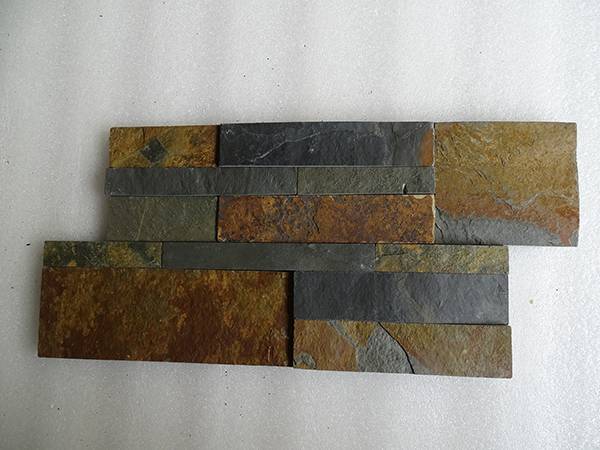External cladding fire test compared to other cladding. BS 8414-1 test results and flames for each specimen by time period.
BS 8414-1 test results for developed exterior wall system carried out at BRE. China Natural Stone Veneer Installation

KICT technology of external ACM cladding. Schmatic diagrams of structure and construction method of various building external ACM cladding.
Newswise — There are two major types of disasters. Unlike natural disasters like tornado and earthquake, fire belongs in the category of social accidents. Building fire accident causes significant damages. Five years ago, 72 people lost their lives in the Grenfell Tower fire in 2017. As The Guardian wrote in their article, Every death was avoidable, these types of social accidents can be prevented by new technology. The Korea Institute of Civil Engineering and Building Technology (KICT, President Kim Byung-suk) announced they have developed a world-class exterior wall construction method that has good insulation performance and is resistant to fire.
As the insulation performance standards for buildings are being strengthened day by day to reduce greenhouse gases, external insulation methods such as EIFS (Exterior insulation finishing system) construction is increasing significantly. In particular, as an external cladding system for high-rise or super-high-rise buildings, aluminium composite material (ACM) with insulation, which is easy to construct and has a beautiful appearance, is commonly used.
However, in the conventional ACM cladding method, heat loss often occurs due to heat bridge, a phenomenon in which warm air or heat inside the building escapes through the building structure due to the space existing between the outer wall of the building and the finishing material. In addition, fires in high-rise buildings rapidly spread vertically due to the stack effect that occurs when strong air generated in high-rise buildings rises or falls vertically.
Examples of such cladding fire accidents include the Grenfell Tower fire in London 2017 and the 33-storey apartment fire in Ulsan, Republic of Korea in 2020. The Ulsan apartment fire incident was a large-scale fire that burned the entire high-rise building and spread the fire to the surrounding buildings even though glass wool was used as the insulation material.
A research team led by Dr. Taewon Lee and research specialist Do-Hyun Kim at the Department of Fire Safety Research in KICT, developed a technology that improved these problems.
It was constructed as a unit ACM cladding module with an insulating material attached, but the hollow layers of the vertical and horizontal parts existing at the junction between these modules were reinforced with insulating and flame retardant materials. The developed technology is a new building external wall structure and construction method that can effectively reduce heat loss and fundamentally block the spread of fire by filling the existing empty space with insulation and flame retardant materials. Two effects can be expected at the same time: energy saving and fire safety performance improvement.
As a result of performance verification of the developed technology, it was confirmed that the thermal conductivity of 0.147 W/m2·K. This result exceeded the building-energy regulations(Exterior wall(Direct) 0.15 W/m2·K) for residential buildings in the central part of South Korea. Germany is one of the most efforts countries for the Energy Conservation Act(EnEV) regarding external wall systems. The EnEV requires all new exterior walls of heated rooms to reach a U-value of 0.45 W/m²K. Compared to other countries, KICT external ACM cladding technology is overcome severe regulation.
In addition, a Large-scale fire test was conducted at the Department of Fire Safety Research to verify the performance of preventing fire spread. As a result, in the case of fire spread delay time, compared to the existing ACM cladding that did not fill the hollow layer, it secured more than 4 times longer time from 5 minutes to 23 minutes, securing the golden time for fire accidents.
Meanwhile, cross-checking fire tests were conducted at the BRE( Building Research Establishment), which is the world's only BS 8414-1 test certification body, a real-scale fire safety test for the external cladding system.
The developed technology took 21 minutes, exceeding the international standard of 15 minutes, and its performance was confirmed by international certification organizations.
Researcher Do-Hyun Kim said, “The application of an economical and fire-safe building external cladding tech will greatly contribute to saving energy consumption and reducing greenhouse gas emissions as well as protecting people's lives and property from fire.”
This achievement was selected as the grand prize in the 2021 Disaster Safety Thesis Contest organized by the Ministry of the Interior and Safety (Thesis: Development of a building exterior wall system that satisfies fire safety and insulation performance at the same time).
The Korea Institute of Civil Engineering and Building Technology (KICT) is a government sponsored research institute established to contribute to the development of Korea’s construction industry and national economic growth by developing source and practical technology in the fields of construction and national land management.
Research for this paper was carried out under the KICT Research Program (project no. 20210199-001, 20220237-001) funded by the Ministry of Science and ICT
2021 Disaster Safety Thesis Contest organized by the Ministry of the Interior and Safety

China Ledgestone Wall Supplier Newswise gives journalists access to the latest news and provides a platform for universities, institutions, and journalists to spread breaking news to their audience.